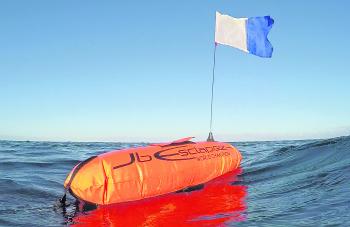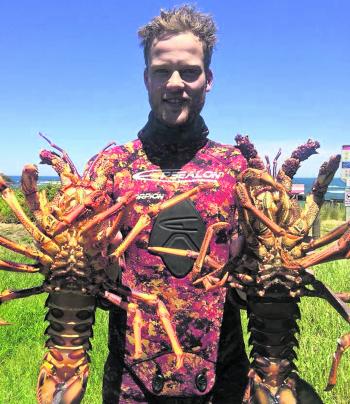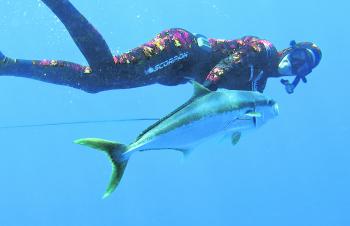Happy New Year! 2016 is done and dusted, and not a moment too soon. Sure, some great fish and crays were captured, but the number of good diving days was way, way down
Persistent swell and even more persistent winds, of ridiculous strength, served only to do our heads in. During or after such periods of tempest, most divers will leap at any chance to get back in and make up for lost time. But sometimes, because of the desperate need to be submerged, poor decisions may be made. There is often a tendency to try and get in regardless, while the conditions may be marginal and far less than ideal – be careful not to ‘dive at all costs’. Be sure to determine the suitability of your potential dive site, prior to your dive. If it looks overly challenging, do yourself and your loved ones a massive favour, and don’t go! Try to exhibit some common sense. If conditions are foul, then shift to a more sheltered location – or go to the pub.
In January, an even greater threat will affect us divers – increased boat traffic means a sharp increase in the number of close encounters of the wrong kind. Our only defence is being as highly visible as humanly possible. Always fly the ‘Diver Below’ flag – the larger the flag and the higher it flies, the easier it is to be seen. A bright coloured float is also a must. The blue and white alpha diving flag is the only recognised flag. Within 100m of this flag, a vessel must slow to 5 knots or less and be duly vigilant to the position and safety of the diver. Most vessel operators will slow or alter course. On the other hand, a percentage of the boating populace seem blissfully unaware of the flag’s meaning, and also appear unaware of their position or proximity to anything at all – it is terrifying, while lying on the bottom, to hear the increasing roar of an approaching boat or jetski. Diving in an insanely overcrowded Port Phillip Bay in January requires courage and a little bit of extra planning.
You can minimise the effects of unwanted boat interaction by implementing a few basic steps: if you have to dive Port Phillip Bay in January or on a busy weekend, fly the largest flag possible, and fly the flag from the largest, brightest float possible. Avoid the highest traffic areas within the approaches of boat ramps or areas where hordes of Jetskis congregate. When surfacing, emerge as close to your float rig as possible, and extend your arm and gun above your head as you do so. Dive with a buddy and use the ‘one up one down’ rule – the buddy on the surface will keep an eye on the boat traffic and will be able to wave off vessels that may approach too close at speed. Dive early – begin your dive adventure at sunrise and exit the water at 9:00am. This is the time of the least in boating traffic. Get in and out before the carnage begins. Your trip down in the car will be easier, you’ll be able to find a car park, and you’ll have a greater chance of survival. Whenever possible, educate a non-diver of the flag’s meaning. A stern word at the ramp may also be satisfying after a close call. Be safe out there.
Whoops! Nearly forgot about the fish. The water’s warming nicely and we’ve seen a number of good-sized trevally – and the salmon out wide are huge. The kingfish are thickening up progressively, and the crays have been hunted successfully by those in the know, and on the occasions when the ocean has allowed our entry. The next few months offer our best conditions. Bring it on!
Reads: 2806
Jon Lazarus with great looking boarfish.

My only defense – the blue and white alpha diving flag is a must!

Kim Adair with a couple of huge crays.

Brett took a dive for these two salmon.

Brett caught himself a very nice ling.

Nathan Watson with a beauty of a kingfish.




